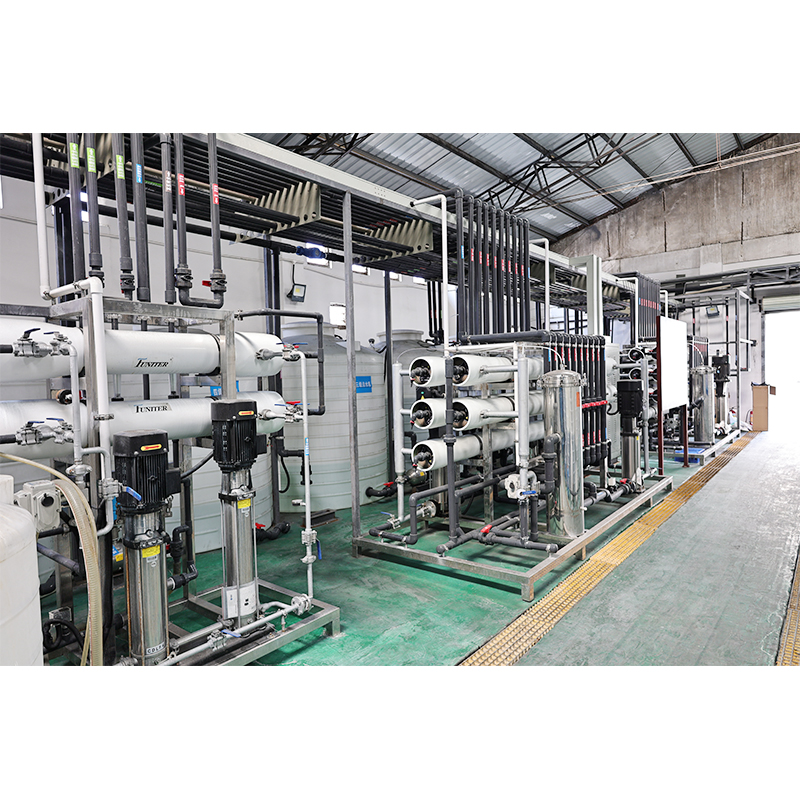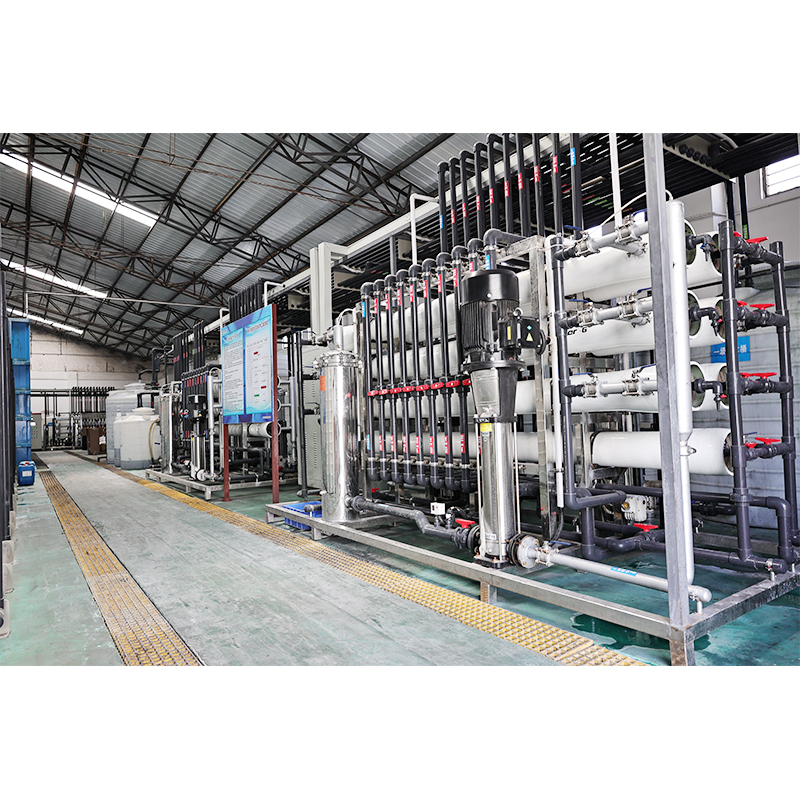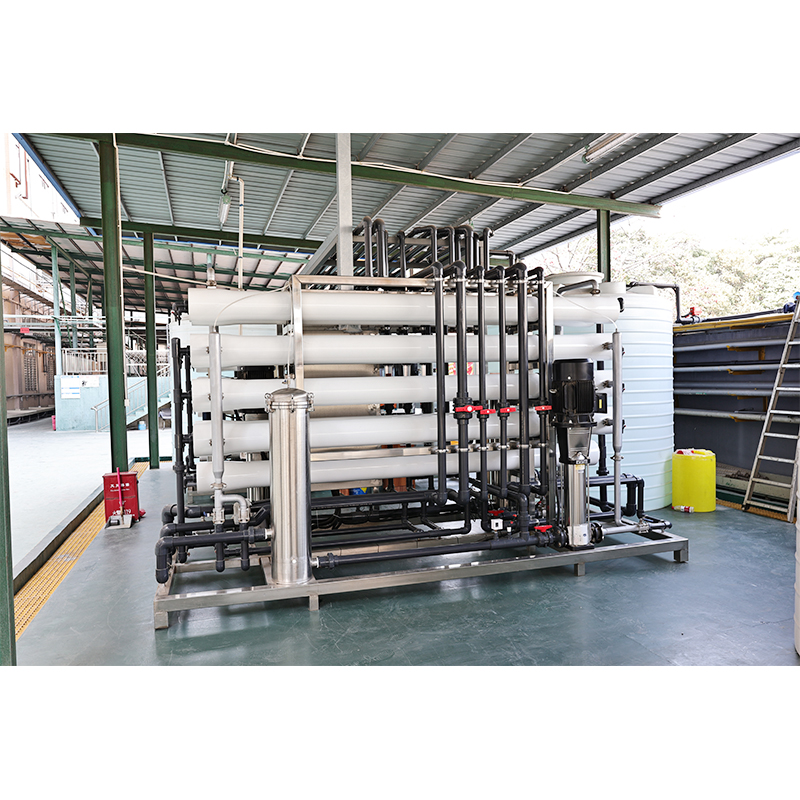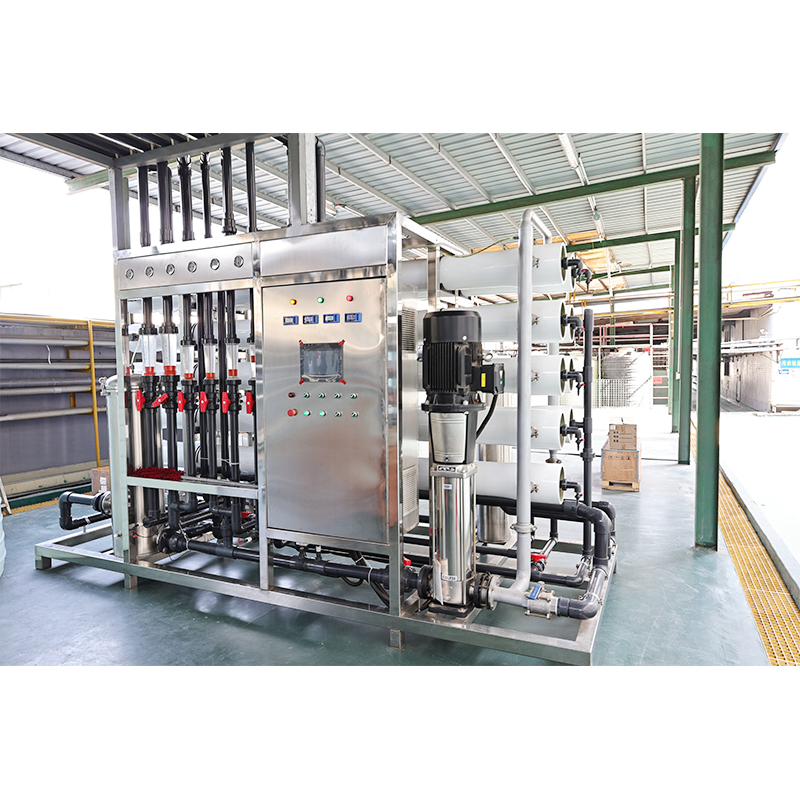How does high-pressure reverse osmosis membrane technology achieve efficient retention of dissolved salts, organic matter, and microorganisms in a 15,000 LPH device, while producing ultrapure water?
Release Time : 2025-08-07
In the grand narrative of modern industrial civilization, water, the source of life, has long transcended its basic survival significance, becoming a core element determining production efficiency, product quality, and environmental responsibility. As a flagship solution for industrial water treatment, the 15,000 LPH Pure Water Equipment embodies professionalism and excellence. More than a simple filtration device, it is a sophisticated life-support system integrating cutting-edge membrane technology, intelligent control, and system engineering. Designed to meet the demanding demands of large-scale factories and complex industrial processes, with a stable output of 15,000 liters per hour, it provides essential "industrial lifeblood" for key industries such as power generation, heavy chemicals, and precision manufacturing.
The superiority of the 15,000 LPH Pure Water Equipment stems primarily from its unparalleled control over the deep purification of water molecules. Its core technology—high-pressure reverse osmosis (RO) membranes—is the pinnacle of modern water treatment. Driven by precisely controlled pressure, raw water is forced through a semipermeable membrane with nanoscale pores, allowing water molecules to pass through while effectively trapping nearly all impurities, including dissolved salts, organic matter, colloids, microorganisms, and even viruses. This process virtually "resets" the water, resulting in water with extremely low conductivity and negligible total organic carbon (TOC) content, fully meeting or even exceeding the stringent standards for industrial-grade ultrapure water. Whether it's the zero-tolerance scaling requirements of boiler feed water in thermal power plants, the extreme avoidance of ionic contamination in semiconductor manufacturing, or the absolute requirement for sterility and pyrogen-free pharmaceutical processing, the 15,000 LPH equipment provides a stable and reliable water source, fundamentally safeguarding the quality of the final product and the safety of the production process.
Its core value lies in its comprehensive optimization of system efficiency, operating costs, and environmental impact. The equipment is equipped with an automated pretreatment system that automatically adjusts pre-treatment units—multi-media filtration, activated carbon adsorption, softening, or ultrafiltration—according to the influent water quality. This effectively protects expensive reverse osmosis membranes, extends their lifespan, and reduces the frequency of chemical cleaning. The real-time water quality monitoring system acts as the equipment's "nerve center," continuously monitoring key parameters of the influent, product, and brine (such as conductivity, pH, pressure, and flow) 24/7. This data is fed back to the central controller in real time, enabling dynamic adjustments and early warnings to ensure consistent water quality. Particularly noteworthy is its advanced energy-saving mode, which significantly reduces high-pressure pump energy consumption through energy recovery devices (such as ERDs), high-efficiency pumps, and intelligent variable frequency control. Compared to traditional water treatment technologies, this can save up to 30% in operating costs, not only directly contributing to customer economic benefits but also respecting energy resources.
At the application level, the 15,000 LPH pure water equipment provides a strategic level of resource security and sustainable development commitment. For large-scale factories, a stable, high-quality water source is the cornerstone of continuous, scalable production. The high throughput and reliability of the 15,000 LPH equipment means that production plans are no longer constrained by fluctuating water quality or supply interruptions. At the same time, its design prioritizes wastewater reduction. By optimizing recovery rates, integrating brine reuse solutions, or linking with zero liquid discharge (ZLD) systems, it maximizes water resource utilization and significantly reduces its environmental footprint. This not only helps companies meet increasingly stringent environmental regulations but also demonstrates their responsible production philosophy, enhancing their corporate image and social value.
The deeper significance lies in the fact that the 15,000 lph pure water equipment serves as a key enabler for modern industry's transformation toward green, intelligent, and efficient production. In the era of pursuing "dual carbon" goals and a circular economy, efficient water utilization and clean production have become core competitive advantages. Through technological innovation, the 15,000 lph pure water equipment transforms water treatment from a cost center into a link for value creation and risk management. It is more than just a water source; it is a strategic partner for customers to achieve their sustainable development goals.
Though a mere assembly of steel and pipes, the 15,000 lph pure water equipment embodies a reverence for the source of life and a profound insight into the future of industry. It refines every drop of water with high-pressure reverse osmosis membranes, safeguards every bit of quality with automated systems, and delivers on every promise with energy-saving technologies. In an era of striving for excellence, efficiency, and responsibility, it is steadily and irreplaceably becoming the purest "source of life" in the modern industrial system, making every water supply a solemn commitment to quality, cost, and the future of the planet.
The superiority of the 15,000 LPH Pure Water Equipment stems primarily from its unparalleled control over the deep purification of water molecules. Its core technology—high-pressure reverse osmosis (RO) membranes—is the pinnacle of modern water treatment. Driven by precisely controlled pressure, raw water is forced through a semipermeable membrane with nanoscale pores, allowing water molecules to pass through while effectively trapping nearly all impurities, including dissolved salts, organic matter, colloids, microorganisms, and even viruses. This process virtually "resets" the water, resulting in water with extremely low conductivity and negligible total organic carbon (TOC) content, fully meeting or even exceeding the stringent standards for industrial-grade ultrapure water. Whether it's the zero-tolerance scaling requirements of boiler feed water in thermal power plants, the extreme avoidance of ionic contamination in semiconductor manufacturing, or the absolute requirement for sterility and pyrogen-free pharmaceutical processing, the 15,000 LPH equipment provides a stable and reliable water source, fundamentally safeguarding the quality of the final product and the safety of the production process.
Its core value lies in its comprehensive optimization of system efficiency, operating costs, and environmental impact. The equipment is equipped with an automated pretreatment system that automatically adjusts pre-treatment units—multi-media filtration, activated carbon adsorption, softening, or ultrafiltration—according to the influent water quality. This effectively protects expensive reverse osmosis membranes, extends their lifespan, and reduces the frequency of chemical cleaning. The real-time water quality monitoring system acts as the equipment's "nerve center," continuously monitoring key parameters of the influent, product, and brine (such as conductivity, pH, pressure, and flow) 24/7. This data is fed back to the central controller in real time, enabling dynamic adjustments and early warnings to ensure consistent water quality. Particularly noteworthy is its advanced energy-saving mode, which significantly reduces high-pressure pump energy consumption through energy recovery devices (such as ERDs), high-efficiency pumps, and intelligent variable frequency control. Compared to traditional water treatment technologies, this can save up to 30% in operating costs, not only directly contributing to customer economic benefits but also respecting energy resources.
At the application level, the 15,000 LPH pure water equipment provides a strategic level of resource security and sustainable development commitment. For large-scale factories, a stable, high-quality water source is the cornerstone of continuous, scalable production. The high throughput and reliability of the 15,000 LPH equipment means that production plans are no longer constrained by fluctuating water quality or supply interruptions. At the same time, its design prioritizes wastewater reduction. By optimizing recovery rates, integrating brine reuse solutions, or linking with zero liquid discharge (ZLD) systems, it maximizes water resource utilization and significantly reduces its environmental footprint. This not only helps companies meet increasingly stringent environmental regulations but also demonstrates their responsible production philosophy, enhancing their corporate image and social value.
The deeper significance lies in the fact that the 15,000 lph pure water equipment serves as a key enabler for modern industry's transformation toward green, intelligent, and efficient production. In the era of pursuing "dual carbon" goals and a circular economy, efficient water utilization and clean production have become core competitive advantages. Through technological innovation, the 15,000 lph pure water equipment transforms water treatment from a cost center into a link for value creation and risk management. It is more than just a water source; it is a strategic partner for customers to achieve their sustainable development goals.
Though a mere assembly of steel and pipes, the 15,000 lph pure water equipment embodies a reverence for the source of life and a profound insight into the future of industry. It refines every drop of water with high-pressure reverse osmosis membranes, safeguards every bit of quality with automated systems, and delivers on every promise with energy-saving technologies. In an era of striving for excellence, efficiency, and responsibility, it is steadily and irreplaceably becoming the purest "source of life" in the modern industrial system, making every water supply a solemn commitment to quality, cost, and the future of the planet.







